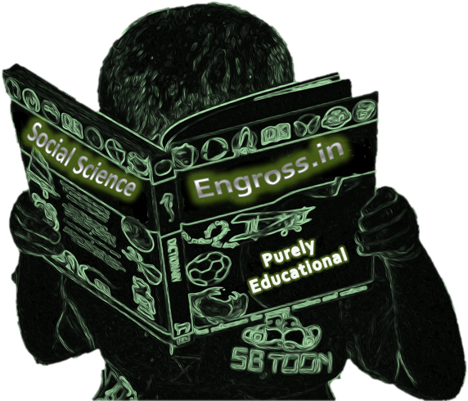Cartoon Interpretations
 |
This cartoon denotes the problems of running a coalition government. When two parties having different ideologies come to power, there can be conflict of ideologies and the administration can come to a stand still |
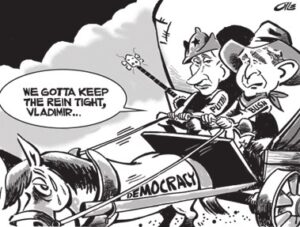 |
In this cartoon, democracy, represented by a horse, is shown as controlled by the top leaders. The dialogue – “We gotta keep the rein tight” denotes that the leaders are unwilling to give up power. This also denotes extreme concentration of power in the hands of top leaders. This is against the principles of power sharing. This has become true at least with Russia, where Putin continues to rule. |
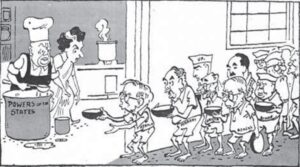 |
This was the scenario of the Indian politics before the 1990s. The Prime Minister is reluctantly sharing power with the Chief Ministers who are shown as beggars begging for power. During those days, the relationship between the Centre and the states was not meaningful. India was federal only in principle but unitary in practice |
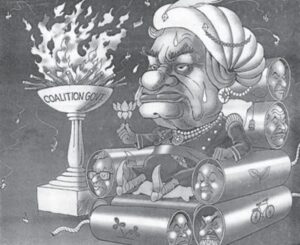 |
This cartoon depicts the problems of running a coalition government. When many parties come together to form a government, the Prime Minister finds it difficult to run the government. He has to accommodate various ideologies, demands and aspirations of coalition partners. Or else the government may collapse. |
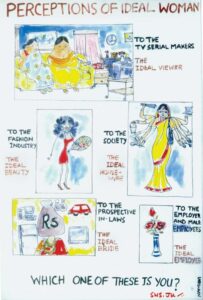 |
The cartoon shows how the society views women. It shows the various forms of exploitation of women that take place in the society. It shows that the Indian society continues to be male dominant and patriarchal. |
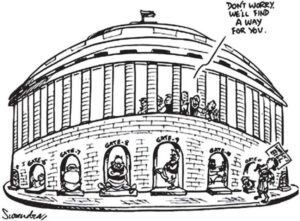 |
This cartoon depicts the male dominant Indian politics. Male politicians refuse to share power with the other gender. They did not allow Women’s Bill to be passed. This situation has changed as the bill was passed recently. This will come into effect from 2019 general elections. 1/3rd seats in the Parliament and Legislative Assemblies are reserved for women. Indian politics will not remain male dominant. |
 |
This cartoon shows the secular approach of the government. The government is expected to treat all religions equallyThis cartoon shows the secular approach of the government. The government is expected to treat all religions equally |
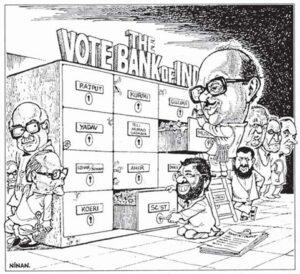 |
This cartoon shows how political parties treat certain caste groups as their vote banks. That means, majority of a caste vote for a party in all elections. Parties, then, can concentrate on getting votes of people of other castes. This gives rise to partisanship which is not good for democracy. |
 |
This cartoon shows the attitude of the politicians. They are with the people, seeking their votes only during the times of elections. After the elections get over, they become unreachable. They do not care about the problems people face and the society faces. |
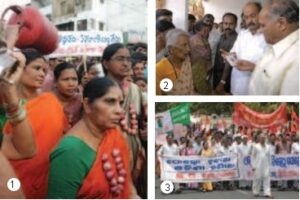 |
This cartoon shows the attitude of the politicians. They are with the people, seeking their votes only during the times of elections. After the elections get over, they become unreachable. They do not care about the problems people face and the society faces. |
 |
This cartoon shows political parties as Necessary Evils. People know that democracy cannot function without political parties, but most people are not happy with the way parties function. They are extremely critical of them. Political parties need to face and overcome many challenges. |
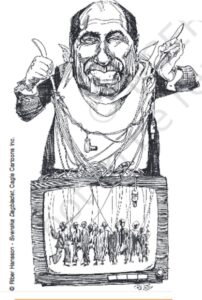 |
This cartoon shows politics controlling media. The mainstream media is pressurised to publish only the version of the ruling party. They are puppets in the hands of the rulers. |
 |
This cartoon depicts money and muscle power in politics – one of the challenges political parties faces. American corporate houses have the Republican party in their pockets. These corporate houses liberally donate to political parties. When in power, these parties are obliged to make policies favouring the business houses |
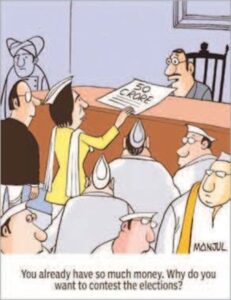 |
This cartoon shows money power and corruption in politics. Politicians are depicted as corrupt. A person enters politics only to make money illegally. |
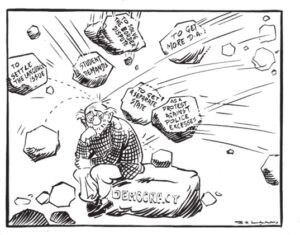 |
This cartoon denotes that democracy needs to accommodate needs and demands of various social groups. |
 |
This cartoon makes mockery of transparency in administration. The government knows everything about the people. But people can’t know how the government functions. The government runs the administration behind the iron curtains. |
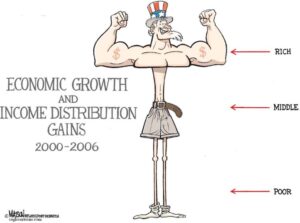 |
The cartoon shows income disparities between the rich and the poor. The top section of the society, the rich, have the largest concentration of wealth and incomes. |
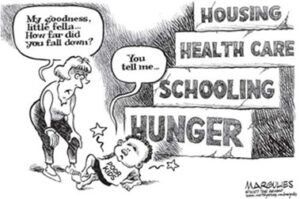 |
This cartoon shows the failure of government schemes to provide basic amenities to the needy people. |
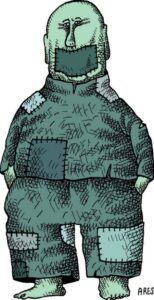 |
The hefty man represents the majority poor people. His thatched cloth represents his poverty. His gagged mouth denotes that the voice of the poor is suppressed. The governments are formed mostly because of the votes of the poor but the governments are not very keen to address the problems of poverty and economic inequality. |
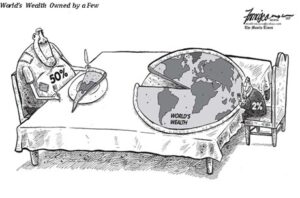 |
This cartoon shows uneven distribution of wealth and incomes in the world. Only a small percentage of ultra rich have the largest concentration of wealth and incomes. The poor at the bottom strata of the society are left with barely a little to share among themselves. They are at the mercy of the government. |
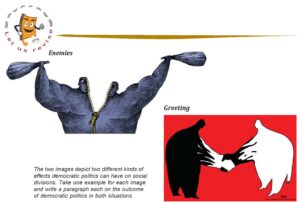 |
The first cartoon shows that two social groups of a country fighting. The more they fight, the deeper would be the divide. This cartoon can be related to the story of Sri Lanka. The second cartoon shows that Democracy can accommodate social diversity and promote harmonious life. This can be related to the story of Belgium. |
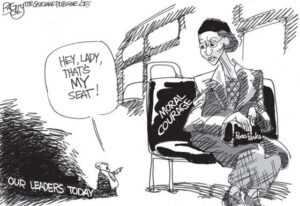 |
This cartoon shows Rosa Parks, an African American, daringly seated despite the white opposition. This also denotes that exploitation based on gender, religion caste, race etc. continues in democracy. But Democracy creates conditions for the disadvantaged groups to fight for their rights. |
